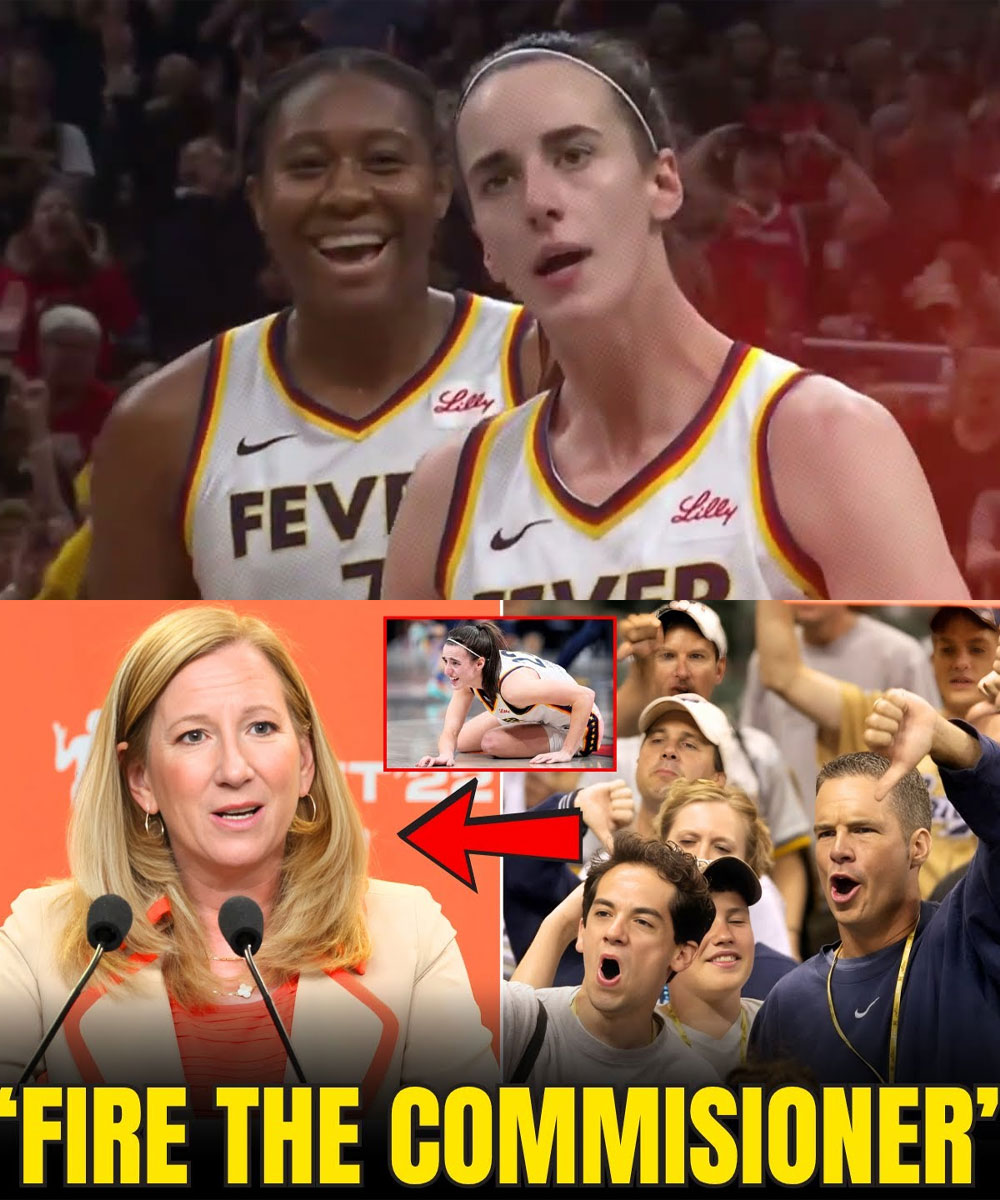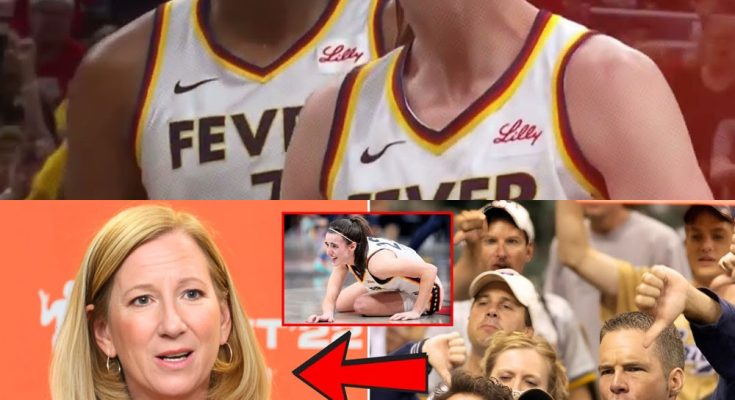The WNBA’s Crisis: Caitlyn Clark’s Injury Exposes the League’s Over-Reliance on One Star
The WNBA is facing a full-scale crisis after Caitlyn Clark, the league’s biggest star and its primary draw, was sidelined with a quad injury. Clark, who has been credited with revitalizing the league’s viewership and filling arenas across the country, is now set to miss at least two weeks, but the real question is: how much longer?
With the timing of her injury coinciding with a critical period for the league, the WNBA is about to learn the harshest lesson in professional sports: you can’t fake star power.

The Fallout Is Immediate and Devastating
In the wake of Clark’s injury announcement, the league has already begun to feel the impact. Several teams, betting on Clark’s presence to sell tickets, have moved games to larger venues. The Chicago Sky, for example, relocated a matchup to the United Center, expecting a massive turnout. But the result was a disaster.
Fans quickly began pulling their tickets, canceling plans, and in some cases, outright boycotting the league. Ticket prices dropped precipitously—by as much as 71% in just one day. The move to bigger venues, which once seemed like a strategic financial decision, has now turned into an embarrassing spectacle of empty seats.
The Indiana Fever, one of the teams most affected, saw a 42% drop in ticket prices for the next two weeks. As Clark sits on the sidelines, the league is being forced to reckon with the reality that her absence has triggered an economic disaster.
An Uncomfortable Reality: The WNBA’s Reliance on Clark
This moment serves as a wake-up call for the WNBA: its success in recent years has been built almost entirely on one player. Caitlyn Clark, with her electrifying performances and undeniable star power, has single-handedly saved the league’s television ratings and ticket sales. Her ability to draw crowds to the arenas and captivate mainstream audiences has been unparalleled in recent years.
However, instead of fully embracing this reality, the league has shown reluctance to acknowledge just how integral Clark is to its success. The WNBA has spent much of its time attempting to spread the spotlight to other players, suggesting that the league’s growth should be about collective effort rather than individual stars. But as Clark’s injury reveals, the league cannot have it both ways. If you are going to build your marketing strategy around one player’s stardom, you cannot act surprised when their absence leads to a drastic decline in interest.
The Fan Backlash: A Movement of Discontent
The fan response to Clark’s injury has been swift and vocal. Social media is flooded with fans announcing their decision to sell tickets, cancel travel plans, and even boycott the league until Clark returns. This coordinated reaction reveals a deep sense of loyalty to Clark, one that the league has taken for granted.
Fans who once watched the WNBA for Clark now feel that their support of the league has been ignored. One fan wrote about selling their tickets for an Indiana Fever game, stating they weren’t interested in attending the game without Clark playing. Another fan shared they would only watch Fever games on delay to avoid giving the league live viewership numbers.
This backlash isn’t just about Clark’s injury; it’s about the treatment she has received from the WNBA since entering the league. There has always been a strange tension within the league: while benefiting from Clark’s popularity, the league simultaneously tried to diminish her impact. For months, players and media members alike suggested that other players deserved recognition too. But now, the WNBA is realizing what life looks like without its biggest star.
The Business Impact: Lost Revenue and Sponsors
The economic repercussions of Clark’s injury are far-reaching. Teams that gambled on her popularity by relocating games to larger venues are now staring down the barrel of empty arenas and significant financial losses. The WNBA’s business model, built on Clark’s ability to bring in casual fans, is collapsing.
The television ratings, once buoyed by her presence, will likely plummet, and sponsorship deals, which had been growing, could face major setbacks. Television networks had structured their WNBA programming strategies around Clark’s ability to deliver strong viewership, and now those plans are in jeopardy.
Merchandise sales, too, will likely take a hit. Clark has been the face of the league, and without her, fans are less inclined to buy merchandise or tune into games. The league is facing a perfect storm of declining attendance, plummeting viewership, and frustrated fans.
The League’s Missed Opportunity
What’s particularly frustrating is that this crisis could have been avoided. Clark had dealt with quad issues during the preseason, and some fans are now questioning whether she was rushed back onto the court too soon. The WNBA’s decision to prioritize short-term revenue over long-term player health may have played a role in this injury. Had there been better injury prevention protocols and load management, Clark might not have been sidelined during this critical period.
The timing is especially brutal, as the WNBA was finally gaining momentum. The league was enjoying mainstream media attention, improving television deals, and seeing increased sponsorship interest. But now, all of that is at risk, and it is unclear if the WNBA can regain that momentum once Clark returns.
A Harsh Lesson in Star Economics
The WNBA is about to learn a harsh lesson about the risks of over-relying on one player for its financial success. It is evident that Clark is not just a star; she is the league’s economic engine. Without her, the WNBA’s attendance figures and television ratings are likely to continue to suffer. The league will have to reconsider its strategy moving forward, particularly in how it manages its stars and the narratives it creates around them.
In the end, the fan backlash and the league’s financial fallout are not just a result of Clark’s injury; they are a consequence of how the WNBA has handled her role in the league. If the WNBA is to continue its growth, it must learn to fully embrace and support its stars—especially one as integral to its success as Caitlyn Clark. Until then, it will be forced to face the consequences of its previous missteps.



